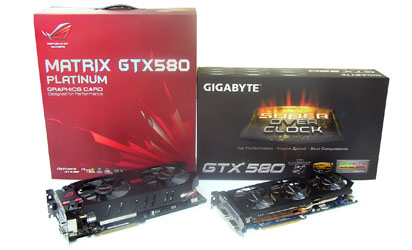
Tried it: AMD Radeon HD 7870/7850 - dangerous pit bulls
GIGABYTE HD 7870 OC (GV-R787OC-2GD)
GIGABYTE also brought together a serious product using the stronger Pitcairn. Here, too, we can speak of a unique printed circuit (blue), which is 24 cm long, 13,4 mm wide and 4,25 cm high together with the cooling. The cooler, as well as ASUS's and GIGABYTE's, is a completely separate solution, the already well-known three-fan Windforce 3X with Triangle Cool technology. This is practically the same copy that we saw on the GIGABYTE HD 7950, it is worth recalling what is described there by clicking on the link.
 |  |
Overall, this is a serious solution that confidently handled the HD 7950, so we wouldn’t think the HD 7870 would be a problem for it, this three-ribbed, three-fan monster handles everything. Here, too, the rib system is dressed in a plastic cover plate, and from above a pretty metal plate throws up the atmosphere with a GIGABYTE inscription. Here too, the two 6-pin PCI Express power connectors “look to the sky” at the back of the card, and the CrossFireX bridge is where it should be.
 |  |
There are no memory chips on the back of the printed circuit board here either, they rest under cooling, which are also Hynix H5GQ2H24MFR-T2C chips here, which are in principle certified for 5 GHz, ie we can't count on many reserves in this respect. In terms of front panel and output range, the recipe hasn’t changed, native HDMI, dual-link DVI and two mini DisplayPorts run along the bottom bar, with the top grille extending the full width at the top.
In the name of this GIGABYTE model, there is also the “OC” distinctive sign referring to factory tuning, as a result of which the GPU clock has been raised to 1100 MHz. The RAM clocked at 4800 MHz, yet we expected very similar performance from the card as the ASUS TOP 7870 release. The box, which also shows at first glance who his son's calf was, was once again hiding the usual things inside.
GIGABYTE HD 7850 OC (GV-R785OC-2GD)
GIGABYTE’s smaller Pitcairn, unlike the ASUS pair, is completely different from its big brother at first glance. The blue printed circuit board was shortened here, of course, but the WindForce 3X was replaced by the WindForce 2X. True, the number of fans has been reduced from three to two, their size has increased, 92 mm air vents chase the air. Beneath them lies a medium-sized, elongated, densely lamellar aluminum rib, with heat dissipated by two 6mm copper heat pipes towards the edges.
 |  |
The length of the PCB is 20 cm, the cooling is about 2 cm beyond this, which means that in this case the extension seen on the ASUS model at the 6-pin PCI Express connector is not justified, you can still conveniently plug in the appropriate cable of our power supply. Of course, the CrossFireX connector does not lag behind the PCB here either. The GIGABYTE 7850 gives the impression of a pleasant, well-assembled card, and the OC signal suggests that it wasn't left behind in the factory tuning either.
 |  |
Engineers have increased AMD’s 860 MHz reference GPU clock to 975 MHz (the same as ASUS TOP), while leaving the RAMs intact so they tick at 4800 MHz. Since this instance also has 2 GB of Hynix H5GQ2H24MFR-T2C GDDR5 chips, we can't expect much more than 200-300 MHz potential in terms of memory. The back cover and outputs follow the line-up already described (dual-link DVI, native HDMI, two mini-DisplayPorts), and the contents of the package have not changed from those seen with the big brother either.












k.jpg)



